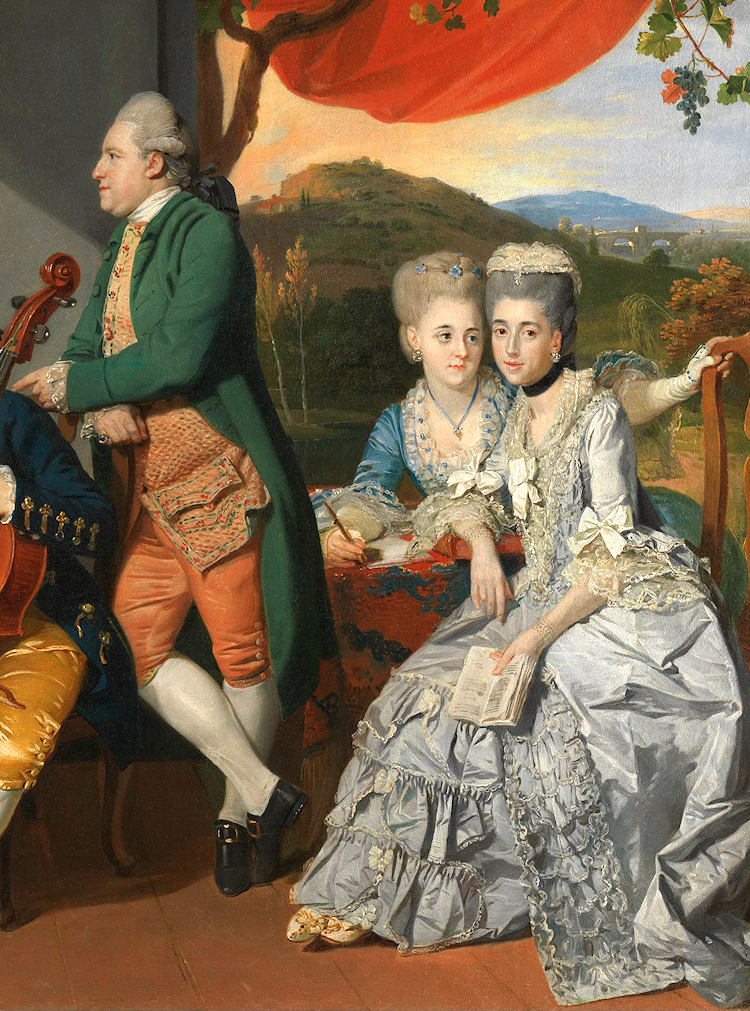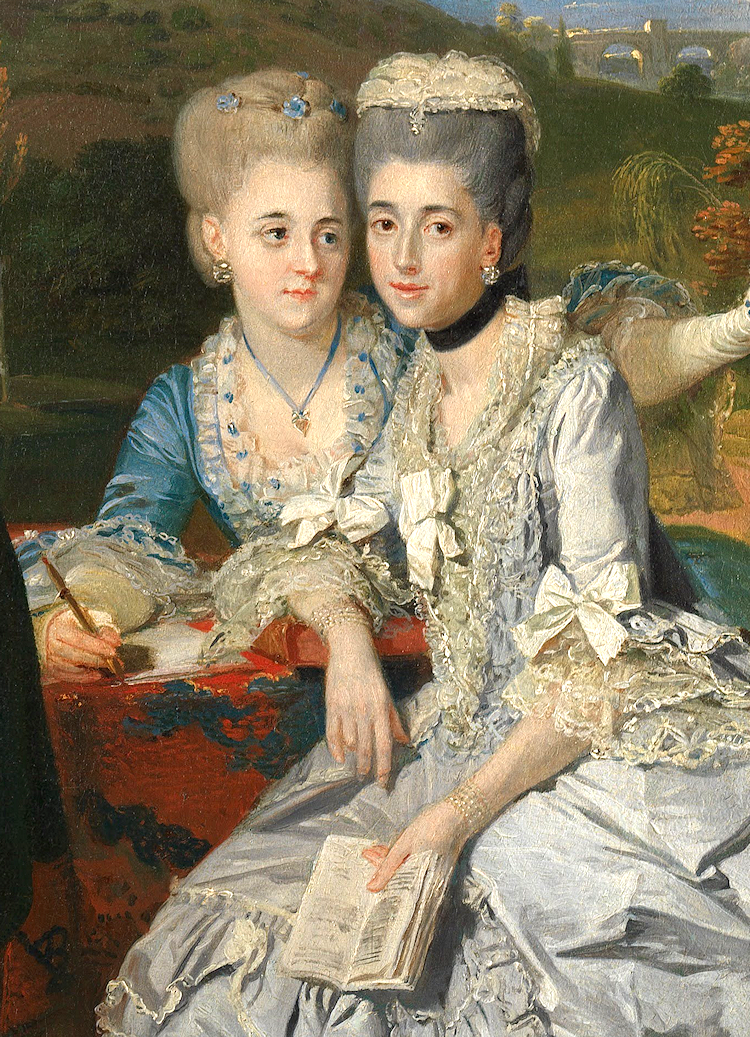This "conversation piece" marked the engagement of George Nassau Clavering-Cowper, 3rd Earl Cowper (1738 - 1789) to the Hannah Anne Gore (circa 1758 - 1826), the sixteen-year-old youngest daughter of Charles Gore (1729 -1807); the father of the fiancée commissioned the painting. Hannah Gore - who usually went by her middle name, Anne - and Lord Cowper are portrayed standing. Charles Gore is shown playing the cello, his middle daughter, Emilie, at the keyboard. Mrs. Gore, née Mary Cockerill, is seated at far right with the couple's eldest daughter, Elizabeth.
Lord Cowper was a wealthy art collector, patron, and member of Parliament. When still Viscount Fordwich, he had completed his education by taking the English aristocrat's requisite Grand Tour of the continent. But arriving, finally, in Florence in 1759, he was so taken with the city that he remained; he was also taken by a beautiful Florentine woman, a certain Marchesa Corsi. By the time his passion for the lady eventually faded, he had been thoroughly caught up in the culture and social life of Florence, and repeatedly stayed his departure for home. (He apparently only once returned to England - and briefly - more than thirty years later, just three years before his death.)
Fifteen years on, in 1774, Charles Gore - described as a "widely travelled, cultured gentleman with artistic tastes" - took his wife and three daughters to Florence, where Hannah met Lord Cowper. The two were married there in June of the following year. In 1780, Cowper bought the Villa Palmieri in Fiesole overlooking Florence. The couple had three sons; the first two would become the 4th and 5th Earl Cowper in succession.
 |
| Charles Gore, independently wealthy through his marriage, was an amateur artist; the watercolor of ships is likely a representation of his work. |
The fictive mythologically-themed painting in the background has come in for some discussion. Said to represent Hercules - emblematic of virtue - driving Envy or Calumny from a wedding ceremony being held in the Temple of Hymen, some have seen it as sly reference to Lord Cowper's past relationship to the Marchesa Corsi or to the presently necessary curtailment, with his impending marriage, of his liaisons with other Florentine women.














La noblesse européenne a été très influencée par la cour française de Versailles dans san décorum et ses vêtements, comme en témoigne ce tableau du talentueux Johan Zoffany.
ReplyDeleteLord Cowper ne faisait pas exception aux nobles anglais qui ont fait le Grand Tour de l'Europe et sont tombés amoureux de l'Italie, que soit Florence, Rome, Naples, Venise, Capri, Taormina ou la campagne.
La pauvre famille de Lord Cowper abandonnée à cause de sa grande admiration pour Florence et de son amour pour ses dames. Sa Seigneurie l'a fait a sa manière. :)
-Beau Mec a Deauville
Le grand attrait de l'Italie et « dolce far niente » !
DeleteThe attention to detail is extraordinary
ReplyDelete